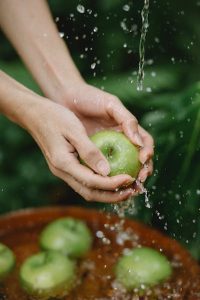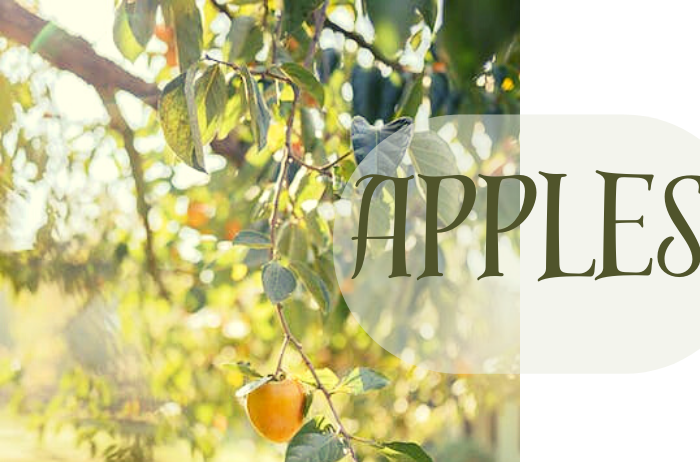Apple is one of the most universally consumed fruit in the world by people. Identified by its Preferred Botanical Name: Malus domestica
Preferred Common Name: Apple
Origin Of Apple
Malus domestica (apple tree) produces a commonly loved edible fruit called apple.
Apple trees was first discovered in central Asia, and it is the most widely grown species in the genus malus.
Apple in Asia and Europe was an ancient fruit and was introduced to North Americans by the European colonists.
It is an evergreen crop; that usually grows large if planted from seed.
Malus domestica can grow to a height of 10 to 30 feet. The trees grow fast but their growth rate declines as they become bigger.
They have a very long lifespan of over 100 years, they bloom during spring and develop their fruits.
Apple trees are planted in many nations of the world, and in many cultures such as Norse, Greek, and European Christian traditions.
They also have many religious and mythological significance.
Apple species are propagated by grafting rootstocks, this helps to control the size of the tree.
Its varieties are over 7,500, which provides a wide range of apple options.
These species are grown for their unique tastes and uses, such as eating raw, cooking, and cider production.
Nutrients Composition Of Apple

Below are the nutrients composition in a raw, unpeeled, 100-gram apple:
Calories: 52
Water: 86%
Protein: 0.3 grams
Carbs: 13.8 grams
Sugar: 10.4 grams
Fiber: 2.4 grams
Fat: 0.2 grams
Medicinal Properties And Uses Of Apple
Multiple health and medicinal benefits of this fruit include:
Since carbohydrates and water are two major ingredients in apples. Eating apples moderate blood sugar levels and improve guts health through their fiber contents.
Apples are high in soluble fiber; this function to lower cholesterol and promote heart health.
Polyphenols antioxidants present in apples help to lower blood pressure and stroke risk.
The fiber in apples feeds good bacteria, that mitigate against obesity and type 2 diabetes.
Antioxidant and anti-inflammatory compounds in apples regulate immune responses, protect against asthma and promote bone health.
How To Grow Apple
Below are the requirements on how to grow apples:
Yield Information of Apple
Averagely, this fruit tree can yield from 75 to over 130 pounds of fruit yearly.
A well nurtured apple tree can produce up to 80-150 fruits per season.
Nursery And Transplant Requirements Of Apple
Below are the steps involved in the transplanting process of an apple plant:
First step involve site preparation, the site must be in full sun and facing away from wind or breeze direction.
Add manure or aged compost into the soil with a cupful of all-purpose fertilizer to the base of the hole.
Dig a hole half again as deep and twice as wide as the tree’s roots.
Put a tree stake in place before planting. Let the stake be driven at least 2 feet deep and to the side of the hole.
Position the tree in the hole such that the soil mark on the stem is at the surface level of the surrounding soil.
Spread the roots out in all directions.
Fill the hole again with half native soil and well-rotted compost or commercial organic planting mix.
Ensure to fill the hole adequately so there will be no air pockets among the roots.
Provide a water-holding means around the tree by creating a soil basin around the tree trunk.
Tie the stakes to the tree with tree ties to secure them.
After planting, water each tree thoroughly.
Soil and Sun Requirements of Apple
Below are the soil and sun requirements for growing apples:
Full sunlight is the most suitable sun condition for growing apples. This fruit tree under partial sunlight or no sunlight will have a low yield. Recommended hour of sunlight is 8 hours daily.
Well-drained loamy soil is best for growing apples, but they will still grow in sandy soil or clay soil.
Neutral soil pH of 6.0 and 7.0 are suitable for growing apple trees.
Shield your fruit tree from the direction of the wind or breeze. Ensure that cold air cannot do not settle at the tree’s location.
Water Requirements Of Apple
Apple tree’s water requirements depend on rainfall. But a fully grown apple tree does not require much rain except for lack of rain or in situations of prolonged dry spell.
Most of its fruit trees will require an inch of rainfall every 7-10 days.
As long as the soil remains moist but not saturated, you can reduce watering. Also, water less as the plant grows.
Planting and Spacing Requirements Of Apple
Factors to consider on the spacing of apple trees include:
- Rootstock
- Pruning
- Soil fertility
Full-size trees seedlings should be planted 15 to 18 feet apart in a row.
Dwarf rootstocks should be about 4 to 8 feet apart in a row and semi-dwarf rootstock about 15 feet in a row.
Standard apple trees require 30-35 feet between trees.
Harvesting Of Apples

Depending on the variety, an apple tree takes 100 to 200 days to reach harvest.
Ready-to-harvest apples have deep skin color, and the presence of windfall signifies harvest time.
Fruits that are more exposed to sunlight will ripen faster, such as fruits at the top and by the side of the tree.
Storage of Apples
For storage purpose, pluck mid or late season cultivars of apples as early-season cultivars are only best for eating soon after picking.
They must be mature, hard, with mature skin color and hard flesh.
Different cultivars have their maximum storing time, so consume those that will not stay long.
Apples can be kept wrapped or unwrapped. To store them wrapped, wrap apples in a newspaper or tissue paper and place them on a tray that allows air circulation.
For unwrapped apples, do not allow them to contact each other.
Cool, dark, and well-ventilated stores are suitable for storing apples.
Diseases and Pests Of Apple
Apple Scab
A fungus causes scab on the fruit, and symptoms include:
Yellow or chlorotic spot on leaves.
Twisting of leaves.
Dropping of leaves from the tree.
Control this disease by removing crop debris to prevent disease survival.
Cedar Apple Rust
Symptoms are yellow patches on the top side of leaves, small black spots, and aecia form.
It comes from fungus. Control methods include planting resistant varieties.
Fire Blight
Fire blight is a bacterial disease, and the plant appears like it has been scorched by fire. It is controlled by removing infected parts.
Apple Maggot
This insect causes sunken areas on the fruit surface. It is controlled by preventing the insect from laying eggs by covering the fruit with a polythene bag.
Conclusion
Apple is a fruit that can be financially fulfulling if commercially grown.
This proves that it is not just domestically or medically beneficial but can be a good source of income while enjoying other advantages.
